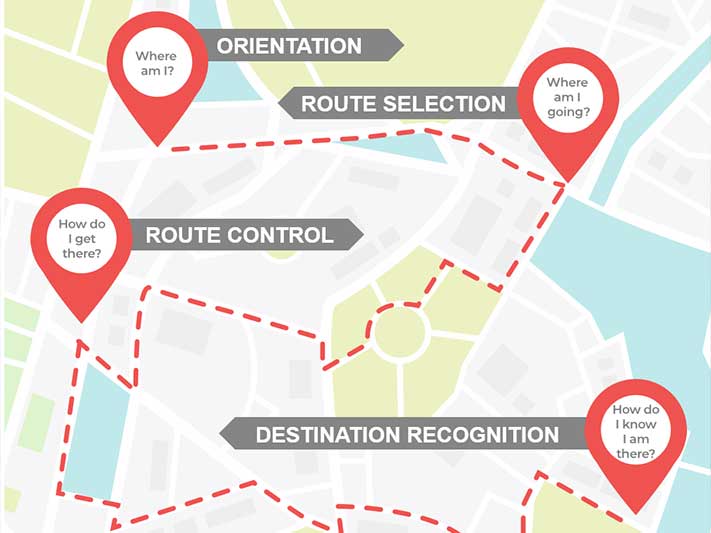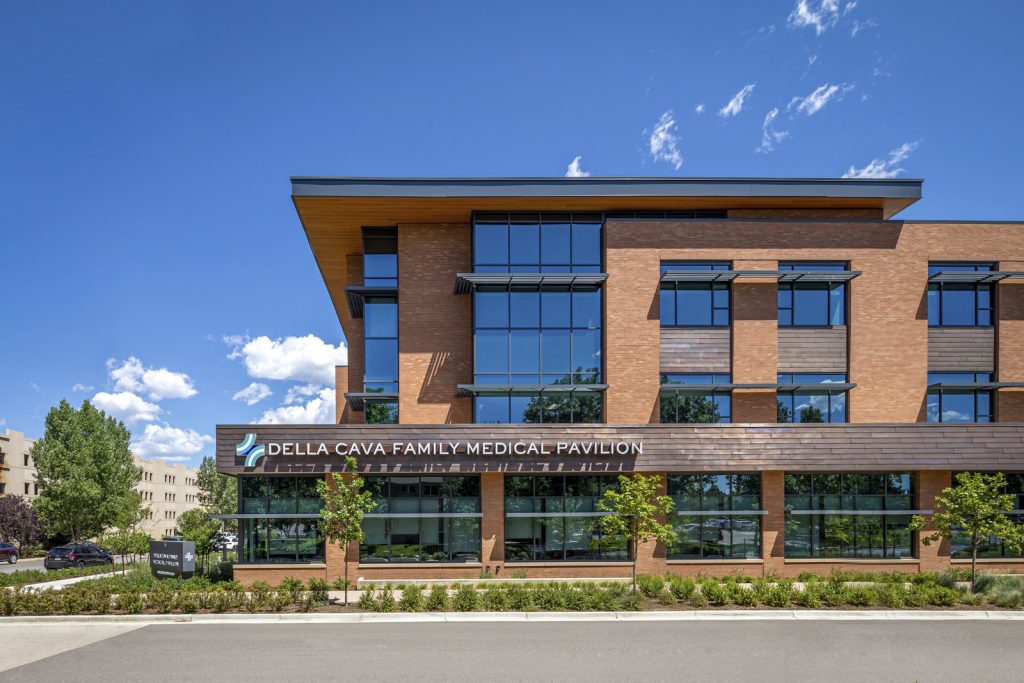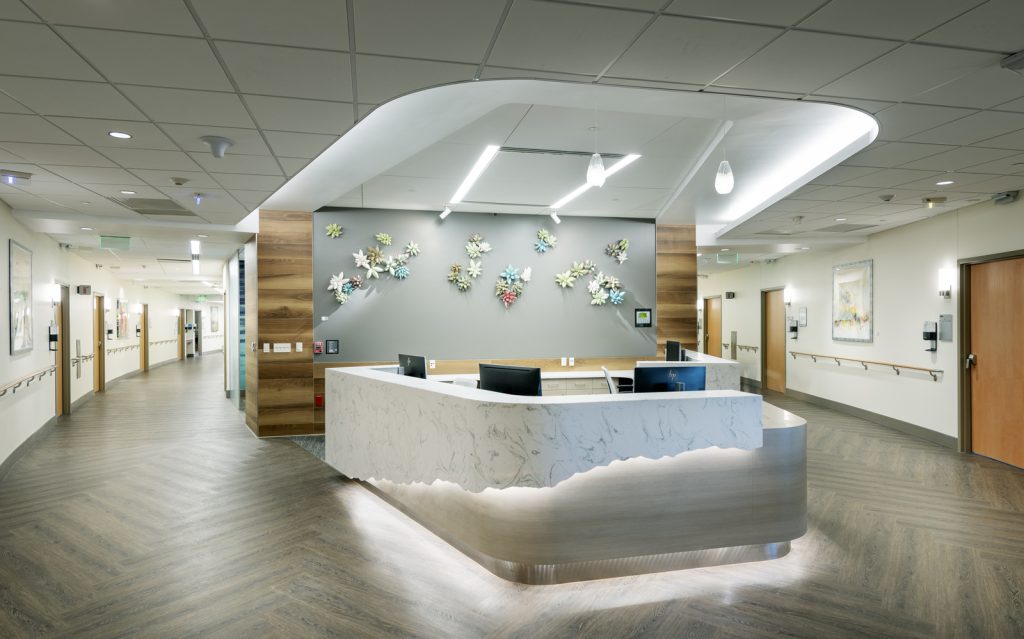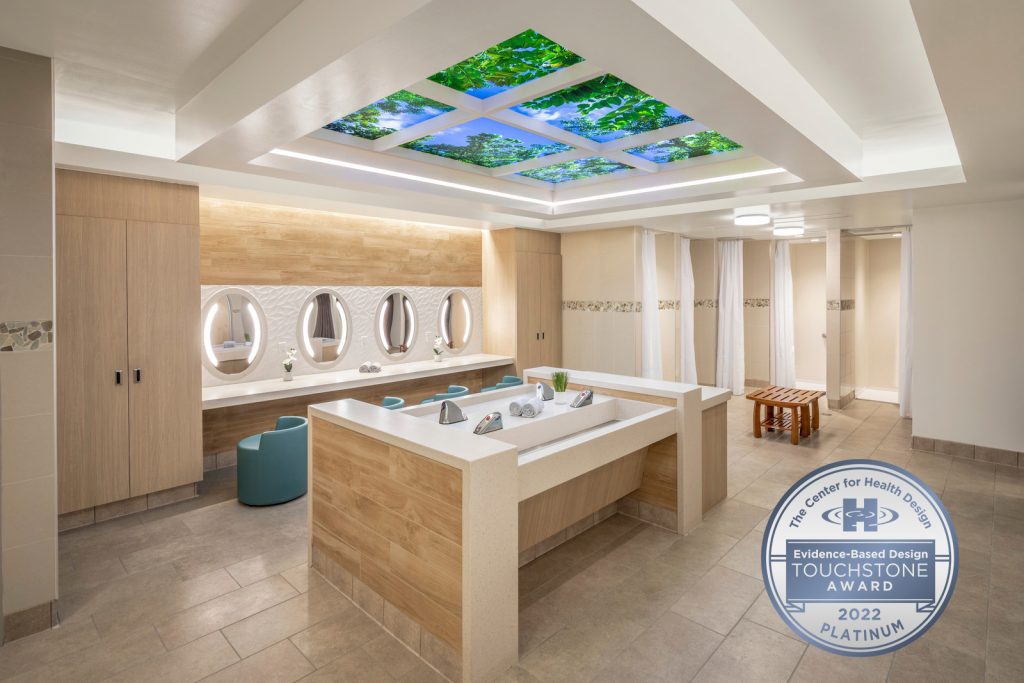Biophilic Design: Using Nature to Nurture
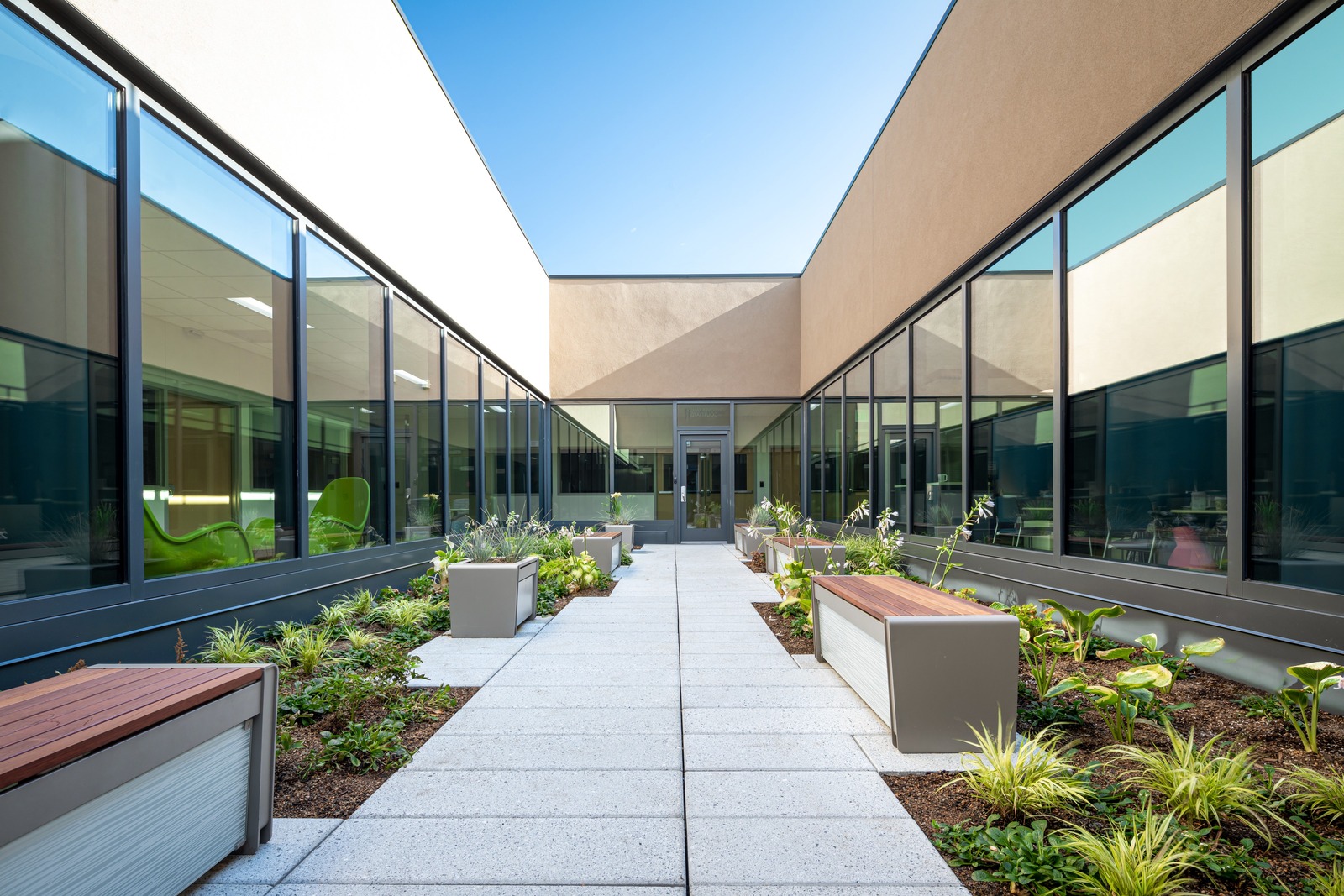
An interior courtyard at the center of the inpatient behavioral health unit at the Boulder Community Health Della Cava Family Medical Pavilion allows sunlight to permeate the unit and provides access to fresh air, greenery, and views of the sky for patients receiving treatment.
The principles of biophilic design have been in use for millennia, yet their application and effects on the built environment have only begun to be researched and defined since the early 2000s – most notably through the works of Stephen R. Kellert – and have since been incorporated into the certification requirements of both the WELL Building Standard and Living Building Challenge. Many of these principles simply feel right from a design perspective, whether it’s the inclusion of natural light, access to views and vistas, or bringing plant life indoors. However, there are more subtle aspects that may not be obvious to the biophilic newcomer.
At its core, biophilic design acknowledges the deep, intrinsic connection between humans and the natural world and seeks to employ natural elements in the built environment to reduce stress, enhance creativity and clarity of thought, improve wellbeing, and expedite healing. Individual biophilic design patterns range from a visual connection with nature and presence of water to more intangible elements like mystery and risk/peril (Browning, William, Ryan, Catherine, Clancy, Joseph. (2014). 14 Patterns of Biophilic Design. New York: Terrapin Bright Green, LLC).
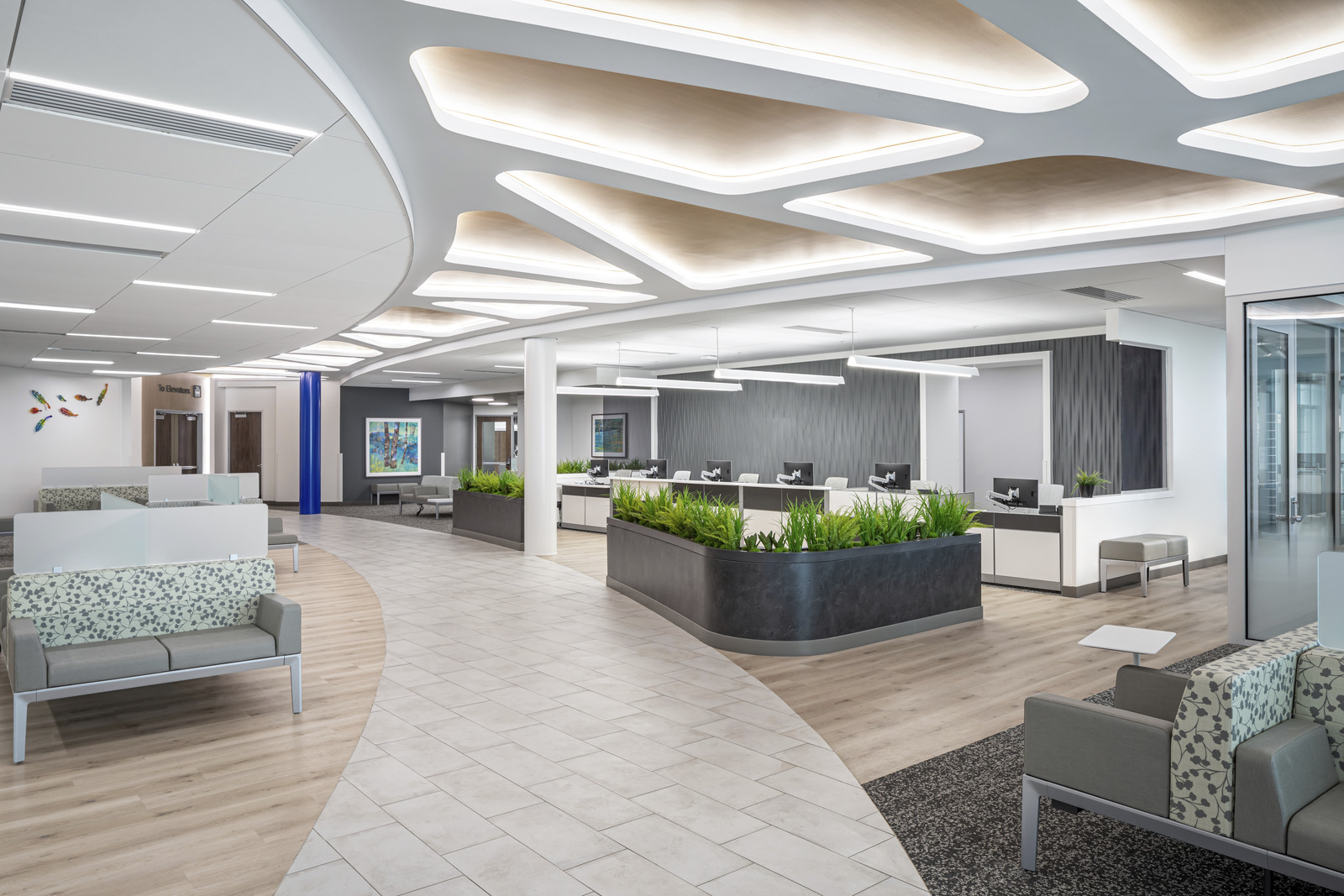
Curved organic cutouts in the ceiling feature, echoed in the floor below, create a natural wayfinding path through the UC Davis Health Roseville Clinic.
Within BA, designers Brittany Boelter, AIA, LEED GA; Danni Martin, EDAC, LEED AP ID+C; and Emily Mika, EDAC, LEED GA recognized the opportunity to help their colleagues understand the science behind biophilic principles and implement them in their own work. By synthesizing important research and the latest industry developments to share firmwide, the three designers have been able to cultivate interest and awareness around biophilic design. “We wanted our coworkers to understand that they were probably doing this without knowing it,” says Boelter.
Mika adds, “[The information we share] provides a link between the research and how we’ve already been using it. When we first started, it was hard for me to define why these things were so helpful for healthcare spaces. But along the way, we’ve learned there are so many ways you can use biophilic design that we didn’t know before. We’re evolving as designers and learning new aspects and ways to use these elements.”
Beyond simply greening a space, biophilic design evaluates the built environment from a holistic perspective. “It’s more than just bringing in a plant,” says Martin. “It’s the way that you feel within a building – what the ceiling height is, what finishes you use. It helps combat placelessness, which is when you’re in a building and don’t know where you are geographically.”
“It shouldn’t be about just four walls and the right equipment,” continues Boelter. “It’s how you are feeling; it’s a mood. It’s creating behaviors and maintaining a more natural feeling for the occupants. Circadian rhythms and lighting, making sure that natural light is coming into the space – that’s biophilic design.”
For healthcare environments, biophilic design could help to unlock even greater healing potential for building occupants, with benefits including lowered blood pressure and heart rate, reduced systolic blood pressure and stress hormones, positive impact on sympathetic nervous system activity, positive impacts on circadian system functioning, improved concentration, memory restoration, and more (Browning, William, Ryan, Catherine, Clancy, Joseph. (2014). 14 Patterns of Biophilic Design. New York: Terrapin Bright Green, LLC).
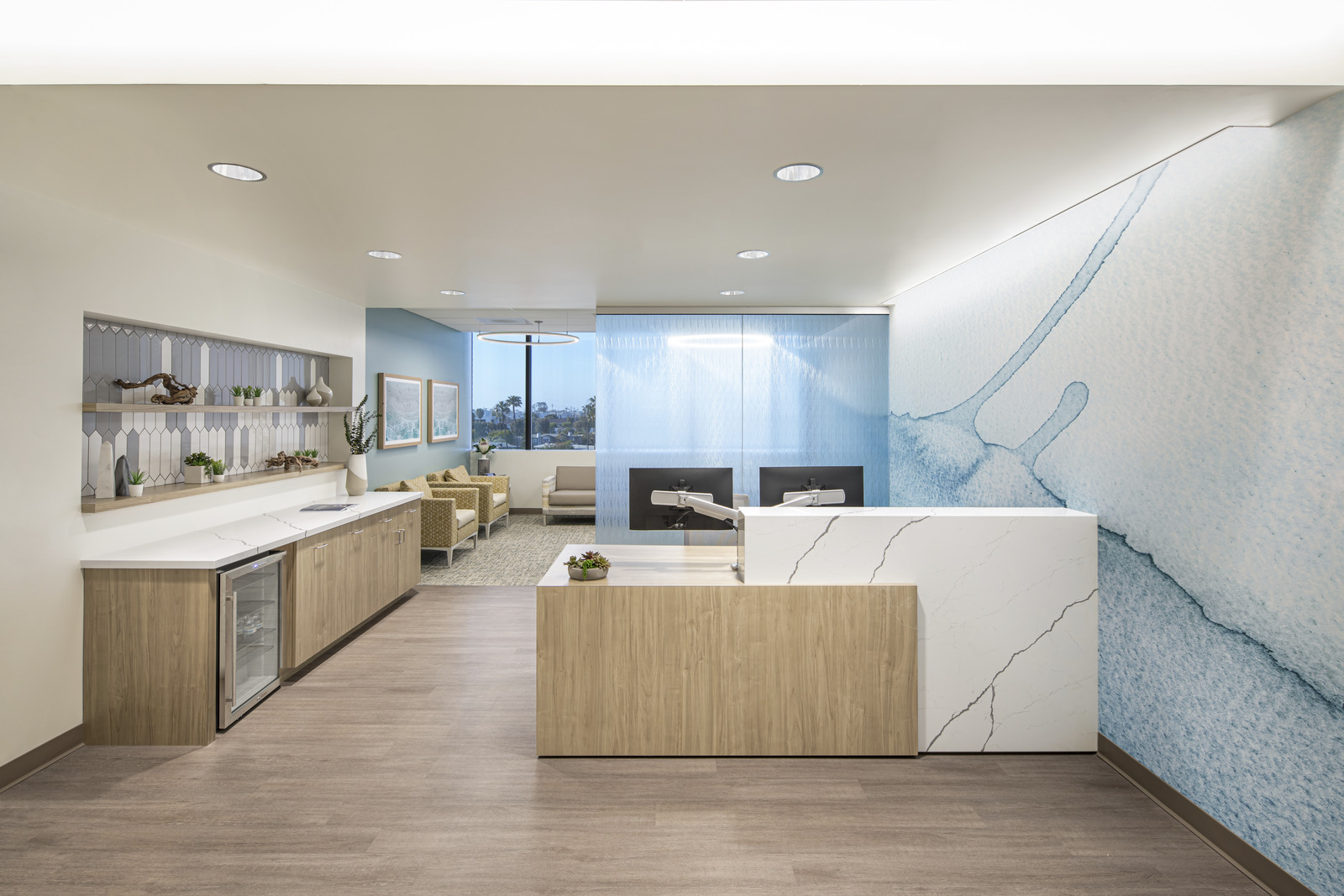
Ocean-inspired graphics and finishes create a calming atmosphere inspired by the coastal views visible from the Lido Cancer Center Infusion & Clinic.
“There are so many studies about how being in nature reduces stress, creates comfort – that’s what we’re trying to do when we’re creating these spaces,” Mika says. “It allows you to feel empathy for people using these facilities.” Martin concurs: “It’s changed the way I design.”
Moving into the future, biophilic principles will likely gain even greater traction as sustainability and preservation of the natural world – and the impacts on human health associated with the inverse – become increasingly urgent. When asked what we might expect from the future of biophilic design, Martin pipes up excitedly: “Mycelium! I am hoping that we will be more connected to nature in terms of bringing more natural products into our spaces like mass timber or creating more building elements from mycelium. But mycelium is also so cool because it’s nature’s recycler – it breaks down dead plants and animals and turns them into nutrients to help other living organisms thrive. Why can’t buildings be broken down at the end of their life to make new ones? We’ve been thinking in terms of a linear economy for a long time where we take resources, make things, then dump them at the end of their useful life. I think the ultimate goal of biophilic design and sustainability is moving towards a circular economy where our ‘waste’ becomes the nutrients for buildings tomorrow.”
Boelter concludes, “We’re designing for patients as well as staff in healthcare facilities. The more biophilic design that we can bring into these spaces, the more it helps everyone who’s experiencing those environments. With climate change right now and things coming to the surface in terms of needing healthier built environments, we’re going to hear a lot more about integrating biophilic design.”
Further Reading:
- 14 Patterns of Biophilic Design – Terrapin Bright Green
- Biophilic Design: The Theory, Science, and Practice of Bringing Buildings to Life – Stephen R. Kellert, Judith Heerwagen, Martin Mador
- The Practice of Biophilic Design – Stephen R. Kellert and Elizabeth F. Calabrese
- Nature by Design: The Practice of Biophilic Design – Stephen R. Kellert

